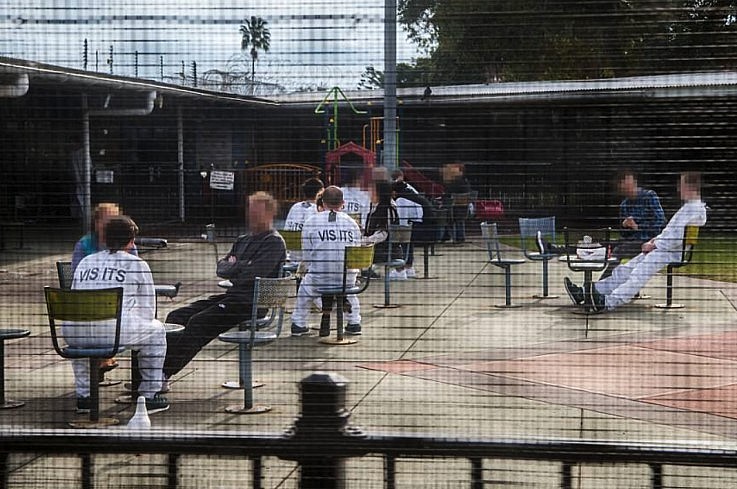4 Easiest Steps to Visit a Prisoners in the U.S (Federal and State Prisons)
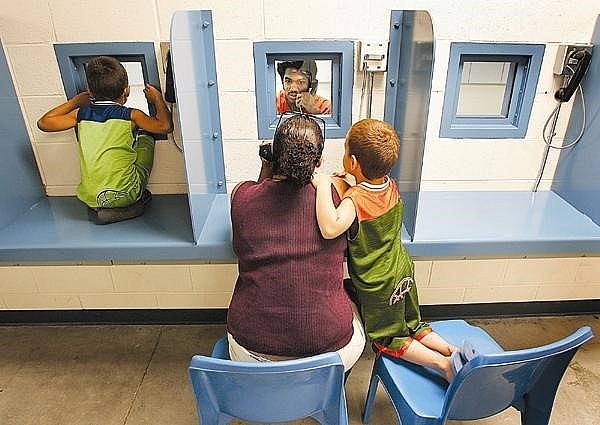 |
| The simple ways to visit a prisoners in the U.S |
What it Costs
Services for scheduling visits are free!
Please be aware that certain visit types, like video visitations, may incur fees. During the scheduling process, any visitation fees will be discussed. If necessary, your payment details will be asked in order to finalize the scheduling process.
How to Visit a Prisonersin state or local prison
The available choices for visiting or transferring funds to incarcerated individuals in state and local correctional facilities differ.
For additional information, please reach out to the state or local corrections department here!
In addition to the general and basic regulations for legally visiting prisoners, each state government in the United States establishes its own requirements. To visit prisoners in state/local prisons, follow the instructions on KnowInsiders.com to learn more about registration procedures, conditions, steps, and how to visit soon. You can legally visit prisoners.
• Check out the best ways to visit a Prisoner in Texas!
• Check out the best ways to visit a Prisoner in California!
• Check out the best ways to visit a Prisoner in Florida!
• Check out the best ways to visit a Prisoner in Georgia!
Read more: How Many Prisons/Prisoners Are There In Georgia - The Most Deadly Prisons
• Check out the best ways to visit a Prisoner in Ohio!
• Check out the best ways to visit a Prisoner in Pennsylvania!
• Check out the best ways to visit a Prisoner in Arizona!
• Check out the best ways to visit a Prisoner in Michigan!
• Check out the best ways to visit a Prisoner in New York!
• Check out the best ways to visit a Prisoner in Illinois!
• Check out the best ways to visit a Prisoner in North Carolina!
• Check out the best ways to visit a Prisoner in Louisiana!
• Check out the best ways to visit a Prisoner in Virginia!
• Check out the best ways to visit a Prisoner in Washington!
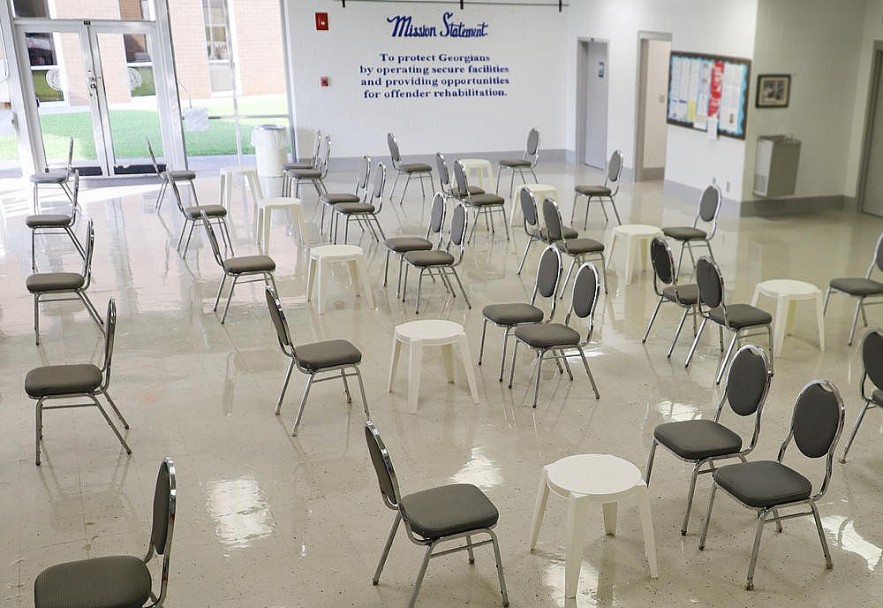 |
| Visit an Inmate in Goergia |
Read more: Simpliest Ways to Send Money to a Prisoner in the U.S (Federal or State Prison)
How to Visit a Prisoners in Fderal Prison
Prior to visiting an individual in a federal prison, the Bureau of Prisons (BOP) advises following these four steps. Ensure the success of your visit by diligently adhering to these steps.
1. Locate the inmate: Find out which prison the person you are visiting is in
Find the location of a federal prisoner who has been detained since 1982. Sentences are being reviewed and recalculated in light of the First Step Act in order to account for impending changes to Federal Time Credit. Consequently, the date of release for an inmate might not be current. Visitors to the website should keep returning to see if anything has changed.
Occasionally, a prisoner may be transferred to another correctional facility in order to take advantage of distinctive programs available at that particular site. They may also be relocated to receive medical treatment or due to security considerations.
Hence, the initial phase in organizing your visit should involve ascertaining the current location of the inmate.
→ Find an inmate Here!
2. Be Approved: To visit, you must be pre-approved
Prior to scheduling visits, it is imperative to obtain authorization from both CDCR and the incarcerated individual you intend to visit. In order to obtain approval, it is necessary to submit an application.
Visiting an inmate is only permitted if they have included you in their approved list of visitors and if you have received clearance from the Bureau of Prisons (BOP).
Upon their arrival at a new correctional facility, inmates compile a visiting roster through the following procedure:
→ An inmate is given a Visitor Information Form when he/she arrives at a new facility.
→ Inmate completes their portion of the form and mails a copy to each potential visitor.
→ Potential visitor completes all remaining form fields.
→ Potential visitor sends the completed form back to the inmate's address (listed on the form).
→ We may request more background information and possibly contact other law enforcement agencies or the NCIC
→ The inmate is told when a person is not approved to visit and it is the inmate's responsibility to notify that person.
Who can an inmate add to their visiting list?
Immediate Family:
• Mother
• Father
• Step-parent(s)
• Foster parent(s)
• Brothers
• Sisters
• Spouse
• Children
Relatives:
• Grandparents
• Uncles
• Aunts
• In-laws
• Cousins
Other types of approved visitors:
• No more than 10 friends/associates
• Foreign officials
• Members of religious groups including clergy
• Members of civic groups
• Employers (former or prospective)
• Sponsors
• Parole advisors
• Attorneys
There may not be a visiting list when an inmate is transferred to a new prison or enters prison for the first time, among other situations. In this situation, visiting privileges may be granted to immediate family members whose identity can be confirmed using the details in the prisoner's Pre-Sentence Report. Nonetheless, access to a person may be refused if there is scant or no information available about them. Always give the prison a call in advance to make sure your visit will be approved.
How to Get Approved to Visit an Incarcerated Person in CaliforniaStep 1: Receive Signed Visitor Questionnaire A Visitor Questionnaire (CDCR Form 106) must be completed in order to request permission to visit. Kindly ask the person you want to visit who is incarcerated to send you the Visitor Questionnaire. Before sending the questionnaire to the potential visitor, the prisoner must sign it. By signing this document, the prisoner attests to their consent to the applicant being placed on their visiting list.
Step 2: Complete the Visitor Questionnaire It is crucial that you complete the questionnaire. The application asks the candidate to list all arrests and convictions for crimes, even if there were no charges or convictions resulting from the arrest. You should fill out the questionnaire completely because CDCR will check your background for arrests and convictions when processing your application. If the check reveals an arrest or conviction that is not on the form, permission to visit will be denied. It is crucial to remember that any interaction with law enforcement could be documented in the California Law Enforcement Telecommunication System and might necessitate the applicant providing additional information. Give as much detail as you can about the approximate date and reason for the arrest, even if you are unable to recall every detail of the arrest or conviction. Step 3: Mail the Visitor Questionnaire Send the completed questionnaire by mail to the visiting lieutenant or sergeant in charge of the prisoner you wish to see. The Adult Institutions list and the individual institution pages both have mailing addresses. The completed application should be sent to the attention of "Visiting" at the prison. The majority of prisons have separate addresses for mail intended for inmates and mail intended for staff. Make sure you obtain the address used for mail intended for staff. Each institution has a different processing time for visiting questionnaires depending on the amount of forms received and the number of employees authorized to complete the review process. Step 4: Receive Notice of Approval or Disapproval The person behind bars is informed if your request for a visit is granted, and they are required to let you know. You don't need to bring any documentation of your approval with you to the prison; once granted, you are entered into the computer system as the inmate's authorized visitor. In the event that you are denied approval, the prison will notify you in writing along with the reason(s) for your denial; the inmate will only be informed of the denial. You have the option to reapply, challenge the denial, or have the prisoner challenge the denial if your request for visitation is denied. You have the option to resubmit the Visitor Questionnaire with accurate and complete information if the denial was made due to incomplete or inaccurate information on it. You should resubmit the questionnaire and include the additional information if the prison requests additional information, such as proof that the applicant is no longer on probation, as this is sometimes the reason for denial. Appealing a Notice of Disapproval You can file an appeal with the prison warden in writing if you disagree with the justification provided for the disapproval. After receiving your appeal, he or she has fifteen working days to respond. Should you be unhappy with the response or action taken by the institution, you can file an appeal with a copy of the institution's decision and send it to the California Department of Corrections and Rehabilitation, Division of Adult Institutions, Director or his/her designee at P.O. Box 942883, Sacramento, California, 94283-0001, Attention: Director, Room 351-N. Appeals submitted to the Director will receive a written response from the director within 20 working days of receipt. The prisoner may use the standard prisoner appeal procedure to independently contest the denial of approval. Emergency or Hardship Visits Visits for emergencies or hardship are occasionally permitted prior to visitor approval. These visits are made at the visiting sergeant's or lieutenant's discretion on behalf of inmates who are unexpectedly visiting from a distance greater than 250 miles away. It is not advisable to depend on being granted permission to visit without following the standard procedure for applying for visits. Every adult who might wish to visit should submit an application before they leave on a trip that includes a visit with a prisoner, so you should try to schedule visits in advance. |
3. Check Visiting Status And Be Prepared: Review all visiting rules, regulations, and procedures before your visit
Depending on whether the facility is open for visits, scheduling techniques may vary. Prior to scheduling, always verify the status of the facilities for visitors.
Before your visit, you should be aware of all applicable laws, rules, and procedures.
How to Schedule a VisitThere are differences in the process for booking a visit between locations. For the most part, in-person and video visit scheduling requires the use of the Visitation Scheduling Application (VSA). There might be instances where you need to set up an email appointment. |
Dress Code
Dress appropriately for the many men, women, and small children in attendance. If you dress in a provocative or revealing manner, for example, you might not be allowed to visitation.
The following items of clothing are typically not allowed, but for information on what is allowed in the visiting room, please refer to the facility's specific visiting policy:
- revealing shorts
- halter tops
- bathing suits
- see-through garments of any type
- crop tops
- low-cut blouses or dresses
- leotards
- spandex
- miniskirts
- backless tops
- hats or caps
- sleeveless garments
- skirts two inches or more above the knee
- dresses or skirts with a high-cut split in the back, front, or side
- clothing that looks like inmate clothing (khaki or green military-type clothing)
Visiting Duration
A prisoner is entitled to four hours of visiting time per month by law, but the prison is typically able to grant more. Nonetheless, in order to prevent crowding in the visiting room, the Warden may impose limits on the duration of visits or the number of visitors at once.
General Behavior
Since there are typically a lot of people there, it's critical that visits be respectful, quiet, and organized. If the prisoner or you are not acting appropriately, the visiting room officer has the authority to ask you to leave.
Physical Contact
Generally speaking, greetings with handshakes, hugs, and kisses (if done tastefully) are permitted at the start and end of a visit. For security reasons (to stop people from trying to introduce contraband) and to maintain order in the visiting area, staff may restrict contact. Visits between spouses are not allowed by the Federal Bureau of Prisons.
4. Plan your trip: Find out when you can visit and get directions to the facility
Visiting Schedules
On Saturdays, Sundays, and holidays, all institutions have visiting hours; most also have them at other times during the week. Prisons may decide to restrict visits to either Saturday or Sunday, with the day varying for each prisoner, since weekends are the most popular times for visits. Additional elements that may influence the days and hours you are able to visit are as follows:
- the prison location
- the prison type
- inmate visiting needs
- availability of visiting space
The prisoner you intend to visit should inform you of the visiting hours; nevertheless, if you have any inquiries, please get in touch with that specific establishment Here!.
How to get there
Regretfully, there is neither reimbursement nor payment from the government for transportation. Kindly make appropriate arrangements for transportation to and from the facility. Please give the prison facility a call if you have any questions. When available, staff can assist with directions, including how to get there by public transportation.
FAQs About the Prison Visiting
How to Get Approved for Inmate Visitation Privileges?
In general, prisoners are open to visits from friends and family. Visitation privileges for jail inmates are automatically granted to immediate family members. Parents (including foster and stepparents), siblings, spouses (including common-law spouses if acknowledged in that state), and kids fall into this category. Keep in mind that minors under the age of sixteen cannot visit prisoners without the consent of their parents or guardians. Provide a list of the immediate family members in the Pre-Sentence Investigation Report (PSR).
Other family members, up to ten friends, clergy, employers, sponsors, parole advisors, attorneys, and members of civic or religious organizations may also be permitted to visit a jail, though approval is not guaranteed. To be added to the inmate's visitation list or approved, visitors who are not members of the inmate's immediate family must first fill out and submit a visitation application form. This form inquires about the visitor's potential relationship to the prisoner as well as any prior criminal history.
 |
| How to Schedule Visits with Inmates |
How to Schedule Visits with Inmates?
You should inquire with the prisoner you wish to see about the day or days you will be able to see them because every prison has different visiting days and hours. Prison visits are typically offered on Saturdays, Sundays, and holidays, though specific facilities may only allow visits for one day or once a week. Days and times for prisoner visits are set by a variety of factors, such as the location and kind of the prison, the amount of space available for guests, and the needs of the inmates.
Since the Bureau of Prisons does not offer transportation or reimburse visitors for expenses incurred in visiting incarcerated loved ones, you will be responsible for making your own travel arrangements for the visit. If available, prison staff should be able to give you directions that will help you find the prison, including information on public transportation.
If you have any additional questions regarding visitation, you can speak with the inmate's counselor or the front desk of the prison facility. The inmate you intend to visit should be able to provide you with information about prisoner visitation days and times. Keep in mind that the amount of visitors a prisoner may see in a given month is restricted. Nonetheless, the federal prison system allows for at least four hours of jail visitation per month for inmates, and groups of people, including family members, are permitted to visit an inmate collectively.
When visiting a prisoner, there are expectations regarding attire. It is anticipated that guests will dress appropriately—that is, nothing too suggestive or revealing. Additionally, during visits, both the visitors and the inmates are expected to act in a respectful, quiet, and orderly manner. Rules limiting what can be brought when visiting a prisoner should also be known to visitors. You can only bring a wallet, keys, and a clear plastic bag with cash to use at the vending machines if you don't have a valid photo ID.
How many people can visit?
In most cases, prisoners are allowed to have up to three visitors at once. The maximum quantity, however, may change based on available space as well as other factors in each jail, like the volume of visitors at any one time. Before their trial, inmates are typically granted three visits per week, on different days. Two visits per week, on different days, are permitted for those who are sentenced.
Are there age requirements?
Kids are welcome to come visit. Children under 16 must be escorted by an adult who is at least 18 years old and carries the appropriate identification. Teens who are 16 or 17 years old are allowed to visit without the presence of an adult, but they are not allowed to accompany a child under the age of 16 as an adult escort unless the child's parents are also present.
When can I visit?
Based on the prisoner's last name, a visitation schedule with dates and hours is available. Visits must take place on designated days and at specified times. This information is available to friends and family on the Department of Corrections website.
What forms of ID are required?
You need to be properly identified. To make sure you have the correct one, check the DOC website. Each adult visitor and unaccompanied minor between the ages of 16 and 17 must present one legitimate form of identification with a legible photo and signature. An identity card needs to be current and not expired. A few instances of legitimate identity documents are:
- Drivers license with photo and signature (including out of state licenses)
- Alien photo I.D. card/passport
- School identification card
- Employment identification card
- Food stamp card
- U.S. Armed Forces I.D. card
- New York State Department of Motor Vehicle Non-Driver License I.D.
What are the Prohibited Items?
The following items are not permitted inside a City jail:
- Radios
- Walkmans
- Beepers
- Cellular telephones
- Cameras
- Electronic equipment
- Recording devices
- Weapons including firearms, ammunition, and knives
- Drugs, alcohol, and beverages
Types of Visits
All prisoners are allowed to have visits unless they have been temporarily denied access because of disciplinary punishment. Details about in-person and family visits can be found below. Please be aware that all visits are contingent upon the Department's Roadmap to Reopening as well as safety and health considerations.
In-Person Visits
The majority of prisoners in the general population are eligible to take part in in-person visits. During these visits, the prisoner can sit with their visitor or visitors in a specially designated communal area that is typically equipped with tables and seats. Five people may visit in person at a time, and visits are unrestricted in length save from regular visiting hours or cancellations due to crowding.
In-Person Non-Contact Visits
Non-contact visits are only permitted for incarcerated individuals who are segregated (i.e., Administrative Segregation, Security Housing Units, Adjustment Centers, pending specific rules violation report charges, or assigned to Behavior Management Units) or who are still in reception (recently admitted to CDCR or transferred between prisons). The prisoner and their visitors are separated by a glass divider during non-contact visits. Staff members escort the prisoner in handcuffs to the visit. Parents who do not want their children to witness an inmate in handcuffs should wait outside the booth or glass divider until the prisoner is seated. The handcuffs are only taken off once the prisoner is firmly positioned in his or her side of the visiting booth. Depending on the institution and the cause for the non-contact status of visits, non-contact visits are limited to three guests and last for a maximum of one to two hours.
Family Visits
"Family visits" are permitted for certain prisoners.Family visits take place in segregated, apartment-like settings within the prison and last between thirty and forty hours. The following people are not permitted to visit their families: someone undergoing the Reception Center procedure, someone on Death Row, or anyone subject to disciplinary sanctions are all examples of jailed individuals. Only the jailed person's immediate family members—their parents, siblings, children, legal spouses, registered domestic partners, or those with a genuine and confirmed foster relationship—are permitted to see them. There is no upper age limit for potential guests. The availability constraint further limits family visits. An qualified prisoner must apply for a family visit with the correctional counselor assigned to them in the prison. Any additional questions regarding family visiting should be sent by the family to the visiting staff of the respective institution, or by the prisoner to their counselor.
Scheduling Family Visits
An inmate must ask the Family Visiting Coordinator to arrange a family visit before one can be scheduled. The prisoner will receive the required papers from the Family Visiting Coordinator at the facility, along with a packet to fill out and submit to their authorized visitors. Following the completion of all paperwork and scheduling of a visit, the Family Visiting Coordinator will help with dinner arrangements and other logistics. Family visits may be available on the weekends, during the week, or on both days, depending on the facility. Meals are the only expenses that inmates and their families must pay; all other lodging is given for free.
Waitlist for Family Visits
For requests for family visits, each institution creates a waiting; waitlists from the past are no longer in force. Every facility has a different visitation policy and approval to visit timeline.
In‑Person Marriage Ceremonies
Commencing immediately, adult institutions participating in the OPEN Phase of the Roadmap to Reopening may arrange and conduct in-person marriage ceremonies. Please get in touch with your institution for more information about its specific marriage regulations.
Requesting and completing a marriage packet still follows the same steps. The marriage packet must be requested from the prisoner's counselor. Previous waitlists for weddings will be honored. Get in touch with the facility where your loved one is being housed for additional information.
In accordance with Governor's Executive Order #N-58-20, adult applicants may continue to appear in person before a county clerk to obtain a marriage license if the institution is not in the OPEN Phase. Even though CDCR complies with this directive, each county still retains sole jurisdiction over the issuance of marriage licenses and the validity of marriage ceremonies.
Anytime for reasons of health and safety, an in-person ceremony may be canceled. If this status changes, you can ask the Marriage Coordinator to reschedule by submitting a request.
Conclusion
When a friend, coworker, or relative is incarcerated, you come to the realization that you can't visit them at home or arrange to meet in public anymore. Thankfully, prisoners in federal and state prisons across the United States are permitted to receive visitors.
Being aware of the most recent rules, guidelines, and processes regarding prison visitation can ease the burden of keeping in touch with loved ones who are incarcerated.
KnowInsiders.com attempts to guide you toward the easiest methods for visiting prisoners in a timely and lawful manner. With any luck, the above recommendations will make it easier for you to comprehend the regulations surrounding prisoner visitation, including details about who is permitted to visit, how often, visitation schedules, and more.
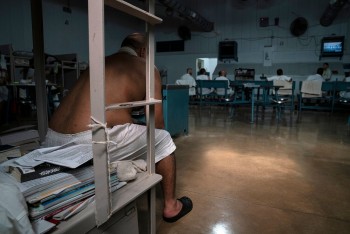 How Many Prisons/Prisoners Are There In Texas - The Most Dangerous Prisons How Many Prisons/Prisoners Are There In Texas - The Most Dangerous Prisons Do you know that Texas is the leading country in the US in terms of the number of prisoners? Check out to know moreaout the ... |
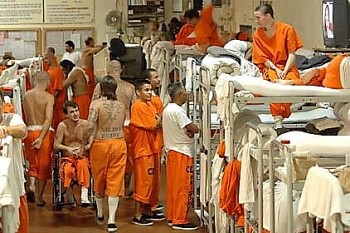 How Many Prisoners/Prisons Are There In California? What Are The Biggest Prisons? How Many Prisoners/Prisons Are There In California? What Are The Biggest Prisons? California has the country's second-largest prison population, trailing only Texas, but following years of sentencing reforms, the Golden State has significantly reduced the number of ... |
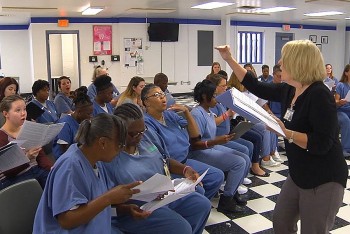 How Many Prisons/Prisoners Are There In Florida? What Are The Most Dangerous Prisons? How Many Prisons/Prisoners Are There In Florida? What Are The Most Dangerous Prisons? How Many Prisoners Are There In Florida? What Are The Most Dangerous Prisons? All of those questions will be answered in the article below! |
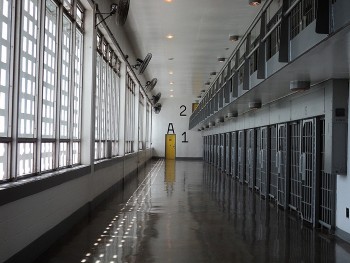 How Many Prisons/Prisoners Are There In Georgia - The Most Deadly Prisons How Many Prisons/Prisoners Are There In Georgia - The Most Deadly Prisons How many prisons and prisoners are there in Georgia? What are the most dangerous prisons in this state? |

